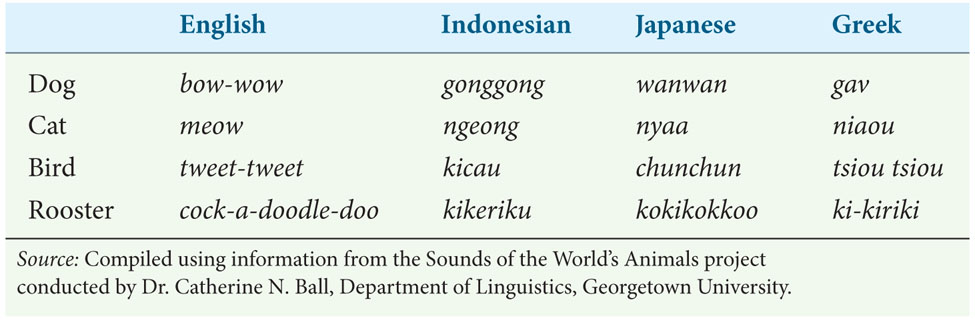Building the Spoken Word
136
CHAPTER 4
THE GEOGRAPHY OF LANGUAGE
Building the Spoken Word

Aquí se habla Spanglish. What does this sign tell you about who lives in this city?
U.S. Army veterans at a recruiting table in Miami, Florida.
(Jeff Greenberg/AgeFotostock.)
Go to “Seeing Geography” to learn more about this image.
137
LEARNING OBJECTIVES
▪4.1
Understand the geographical patterning of languages.
▪4.2
Analyze how languages and dialects have come to exist.
▪4.3
Describe the relationship between technology and language.
▪4.4
Explain the relationships between language and the physical environment.
▪4.5
Identify the ways languages are visibly part of the cultural landscape.
Language is one of the primary features that distinguishes humans from other animals. Many animals, including dolphins, whales, and birds, do indeed communicate with one another through patterned systems of sounds, movements, or scents and other chemicals. Some nonhuman primates have been taught to use sign language to communicate with humans. In turn, we have attempted to translate animal noises into words in human languages, with results that vary across cultures. Although, for instance, a cat obviously sounds the same in any part of the world, the speakers of various human languages render that sound in diverse ways. Table 4.1 shows how the sounds of various animals “translate” into different human languages.

However, the complexity of human language, its ability to convey nuanced emotions and ideas, and its importance for our existence as social beings set it apart from the communication systems used by other animals. In many ways, language is the essence of culture. It provides the single most common variable by which different cultural groups are identified and by which groups assert their unique identity. Language not only facilitates the cultural diffusion of innovations but it also helps to shape the way we think about, perceive, and name our environment. Language, a mutually agreed-on system of symbolic communication, offers the main means by which learned belief systems, customs, and skills pass from one generation to the next.
language
A mutually agreed-on system of symbolic communication that has a spoken and usually a written expression.
138
One of our first and most long-lasting ties to place is forged through language. The ability to name, or rename, a place is a key step in claiming a place as one’s own, as shown, for example, by Figure 4.1, a political map of Antarctica. Notice how many places are named after Antarctic explorers and monarchs of countries that claim portions of the continent: the Ross Sea and Ross Ice Shelf are named after James Clark Ross, the English explorer who charted much of Antarctica’s coastline, and Queen Maud Land is named after Norway’s Queen Maud. Interestingly, Roald Amundsen, the Norwegian explorer who gave Queen Maud Land its name in 1939, took part in an earlier trip that highlights the importance of language. In 1898 Amundsen was part of an ill-fated expedition to locate the magnetic south pole when his ship became stuck in the ice for more than one year. Several of Amundsen’s shipmates, including men from Poland, Romania, Norway, the United States, and Belgium, went insane. This was not only because of the long winter nights and the cold weather; in great part, language differences among the men became their biggest problem. They simply could not understand one another!
